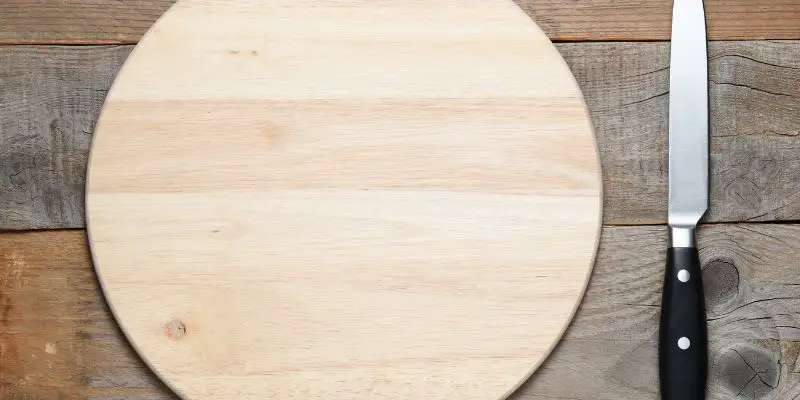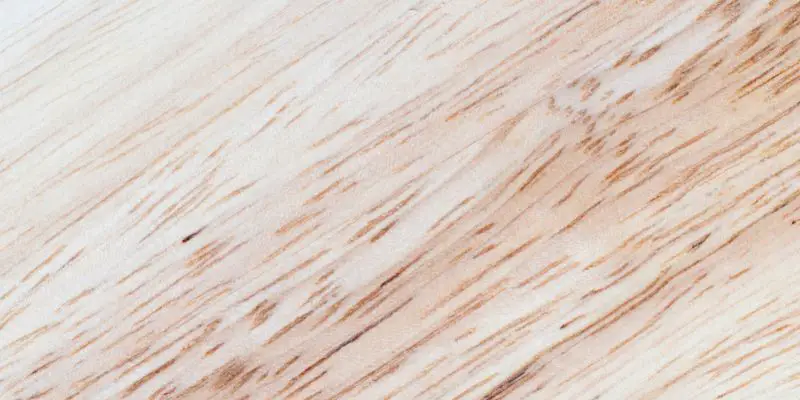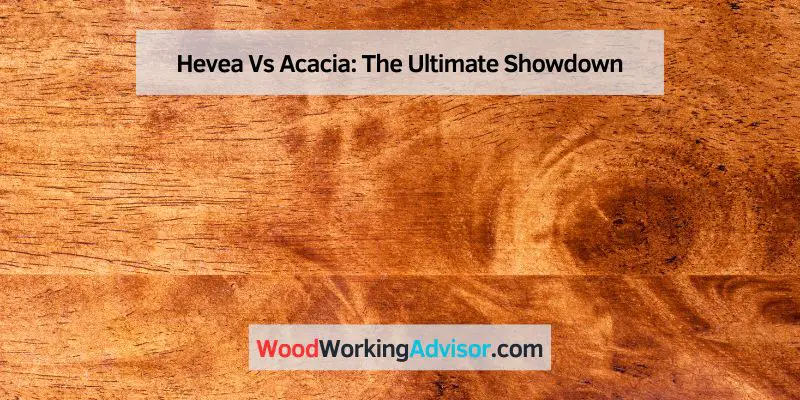Hevea is a type of tree, while Acacia is another type of tree. Now let’s explore the differences between the two.
Hevea and Acacia are two distinct types of trees that are commonly found in various regions around the world. These trees have their own unique characteristics, benefits, and applications. Understanding the contrasts between Hevea and Acacia can help individuals make informed decisions when it comes to choosing the right type of wood for their specific needs.
We will delve into the different aspects of Hevea and Acacia, including their physical properties, uses, and sustainability factors. By the end, readers will have a comprehensive understanding of how these two tree species differ and the advantages each one brings to various industries and applications.
Hevea: The Rubber Champion
Hevea and Acacia are pitted against each other as top contenders in the rubber industry. Discover the distinctive features and benefits of Hevea, the reigning rubber champion.
Characteristics And Growth Of Hevea
Hevea often hailed as the “Rubber Champion,” is a versatile and resilient plant renowned for its exceptional rubber production capabilities. This fast-growing tree species belongs to the family Euphorbiaceae and is native to the rainforests of Amazonia. With its distinct characteristics and adaptability, Hevea has become a prized resource in the rubber industry.
Hevea trees typically reach an average height of 20 to 30 meters, showcasing an attractive evergreen foliage that provides shade to its surroundings. Its smooth, gray bark serves as an essential protective layer, guarding the tree against harsh weather conditions and external damage.
One striking feature of Hevea is its ability to produce a milky, latex-like sap that plays a crucial role in the rubber-making process. These resilient trees yield latex that contains a significant amount of rubber, making them highly sought after by rubber manufacturers worldwide.
Applications Of Hevea Rubber
The versatility of Hevea rubber extends beyond its significance in the global rubber industry. This natural and sustainable resource finds its way into numerous applications, ranging from everyday consumer goods to specialized industrial products.
Hevea rubber is a key ingredient in the production of automotive parts, including tires, belts, hoses, and gaskets. Its remarkable elasticity, durability, and resistance to wear and tear make it an excellent choice for these applications, ensuring optimal performance and safety on the roads.
In addition to the automotive sector, Hevea rubber is widely used in the manufacturing of footwear, sporting goods, and medical equipment. Its ability to provide cushioning, flexibility, and hypoallergenic properties makes it ideal for shoe soles, athletic gear, surgical gloves, and more.
Benefits And Challenges Of Hevea Cultivation
Hevea cultivation offers several benefits to farmers and the environment. Firstly, compared to synthetic rubber production, cultivating Hevea trees helps reduce the reliance on fossil fuels and lowers carbon emissions, making it an eco-friendly alternative.
Furthermore, the economic benefits of Hevea cultivation are significant. Rubber plantations generate employment opportunities and contribute to the overall development of rural communities. The steady demand for Hevea rubber also ensures a stable income for farmers and rubber producers worldwide.
However, Hevea cultivation is not without its challenges. The susceptibility of Hevea trees to certain diseases, such as the devastating South American Leaf Blight (SALB), poses a significant threat to plantations. Effective disease management strategies, including the use of resistant cultivars and proper plantation management, are essential to ensure the sustainability of Hevea cultivation.
In conclusion, Hevea, the Rubber Champion, continues to thrive as a valuable resource in various industries. Its exceptional rubber production characteristics, versatile applications, and environmental and economic benefits make it a top choice for rubber manufacturers and farmers alike. By overcoming the challenges associated with cultivation, Hevea cultivators pave the way for sustainable and profitable rubber production in the years to come.

Acacia: The Versatile All-rounder
Acacia, a versatile all-rounder, is a strong competitor against Hevea. Its adaptability and wide range of uses make it a top choice in various industries. Explore the benefits and features of Acacia versus Hevea for your specific needs.
Acacia wood is a versatile and popular choice in the world of woodworking. It is renowned for its durability, natural beauty, and adaptability, earning it the reputation of being a versatile all-rounder in the realm of wooden materials. In this section, we will explore the characteristics and growth of Acacia, delve into the wide range of applications it offers, and discuss the benefits and challenges of Acacia plantations.
Characteristics And Growth Of Acacia
Acacia is a type of fast-growing, deciduous tree that belongs to the legume family. It is known for its unique grain patterns and stunning golden to reddish-brown hue, making it an attractive option for furniture, flooring, decking, and other woodworking projects.
One of the noteworthy characteristics of Acacia is its ability to adapt to various climate conditions, thriving in both tropical and subtropical regions. Its resilience to harsh weather conditions and pests makes it a preferred choice for outdoor furniture and flooring, where durability and resistance to water and insect damage are essential.
Applications Of Acacia Wood
The versatility of Acacia wood extends to a multitude of applications. Its strength and durability make it ideal for heavy-use furniture pieces such as tables, chairs, and cabinets. The natural beauty of its grain patterns adds an element of sophistication to interior design, making it a popular choice for flooring, wall paneling, and decorative items.
In addition to its aesthetic appeal, Acacia wood is also sought after for its sustainability. Its fast growth rate and ability to regenerate quickly make it an eco-friendly option, especially when sourced from well-managed plantations. Furthermore, Acacia wood is resistant to warping and twisting, ensuring longevity and low maintenance requirements.
Benefits And Challenges Of Acacia Plantations
There are several benefits to cultivating Acacia plantations. Firstly, its fast growth rate allows for quicker harvesting cycles compared to many other types of wood. This makes it a more sustainable choice for wood production, reducing strain on natural forests. Additionally, Acacia plantations help prevent soil erosion and provide habitats for various species of wildlife.
However, despite its numerous benefits, there are also challenges associated with growing Acacia. One of the main concerns is the potential for invasive characteristics in certain regions. When not properly managed, Acacia trees have the ability to spread rapidly and outcompete native species, negatively impacting the biodiversity of ecosystems. Thus, it is crucial to implement responsible planting and management practices to mitigate these risks.
In conclusion, Acacia wood proves itself to be a versatile and sustainable choice, making it a sought-after material for various woodworking applications. Its remarkable characteristics, wide range of uses, and the benefits associated with carefully managed plantations make Acacia a favorite among designers, homeowners, and environmentally-conscious individuals alike.
Comparing Hevea And Acacia
When it comes to choosing the right type of wood for various applications, it can be challenging to determine which option is the best fit. In this article, we will compare two popular types of wood – Hevea and Acacia – and evaluate their environmental impact, economic factors, and sustainability and long-term viability.
Environmental Impact
Considering the environmental impact of different materials is crucial in today’s world. Both Hevea and Acacia have their unique characteristics in terms of sustainability.
Hevea, also known as rubberwood, is an environmentally friendly option. It is sourced from rubber tree plantations, which are typically grown for their latex production. Once the trees reach the end of their latex-producing life cycle, they are harvested for their timber, making Hevea a sustainable choice.
In contrast, Acacia is a fast-growing tree species, known for its versatility and resilience. However, due to its rapid growth rate, Acacia plantation forestry can sometimes lead to deforestation and soil degradation if not managed sustainably.
Economic Factors
Considering the economic factors is essential when making decisions on wood selection.
Hevea has gained popularity in recent years due to its affordability. The availability of Hevea timber makes it cost-effective for various applications, such as furniture manufacturing and construction.
On the other hand, Acacia wood tends to be slightly more expensive. Its durability and attractive aesthetics make it a sought-after choice for high-end furniture and flooring.
Sustainability And Long-term Viability
Looking towards the future, sustainability and long-term viability are of utmost importance.
Hevea holds an advantage in terms of sustainability. As mentioned earlier, it is sourced from rubber tree plantations, which are carefully managed to ensure continued growth. This makes Hevea a renewable resource with a low environmental impact.
Acacia, when managed sustainably, can also be a viable option. Careful planning and responsible forestry practices can help maintain a healthy ecosystem and ensure the long-term availability of Acacia wood.

Frequently Asked Questions Of Hevea Vs Acacia
Is Hevea A Good Butcher Block?
Yes, Hevea is a good butcher block. It is a durable and sustainable material that is perfect for cutting and chopping. Its natural beauty adds warmth to any kitchen.
What Are The Disadvantages Of Acacia Wood?
Acacia wood has a few downsides. It may be prone to warping or splitting over time, especially if not properly maintained. It can also be sensitive to humidity, which may cause it to expand or contract. Additionally, acacia wood is susceptible to scratches and dents, requiring cautious handling and care.
How Durable Is Hevea?
Hevea is highly durable due to its strong and resilient properties. It can withstand wear and tear, making it suitable for long-lasting use. Its natural characteristics make it a reliable choice for various applications.
What Wood Is Best For Butcher Block?
The best wood for butcher block is hard maple. It is durable, easy to maintain, and has natural antimicrobial properties. Oak and cherry are also popular choices, but maple is the most recommended due to its strength and resistance to knife marks.
Conclusion
Both Hevea and Acacia have their unique qualities and benefits when it comes to wood choice. Hevea offers durability and versatility, while Acacia offers natural beauty and resistance to water damage. Ultimately, the decision between the two will depend on your specific needs and preferences.
Consider factors such as budget, aesthetics, and intended use before making your final choice.


